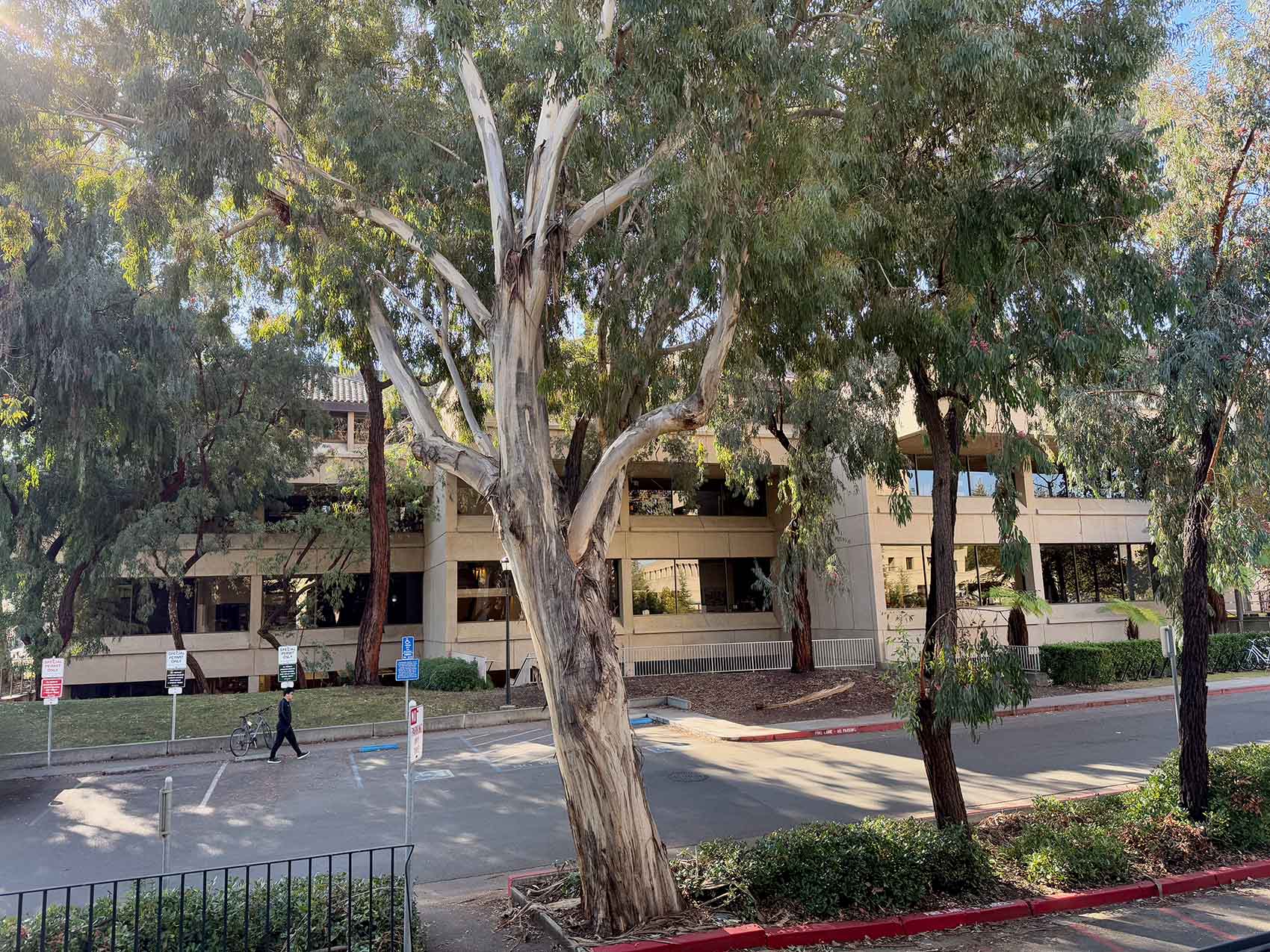Eucalyptus melliodora
 yellow box
yellow box

The species name means honey-scented, and its flowers are indeed fragrant when the nectar flow starts. Some consider the honey itself superlative. In habitat it tends to grow on loamy and other sites generally suitable for agriculture, and consequently much of it has been cleared. Trees tend to flower every other year. Professor Ron Bracewell recalled this tree from his time on Scott’s Main Range in New South Wales in 1939. The bee-keeper he worked for there scanned the valley slopes with binoculars for signs of flowering, to determine where to move his hives for the next season.
“Yellow box” refers to the pale wood, similar to that of English box (Buxus sempervirens). The bark itself is not of the “box” type but highly variable. It is rough and fibrous, loosely held, for a sometimes substantial portion of the trunk and even branches, and smooth with yellow and gray patches above that. Buds and fruits are similar to those of relative E. leucoxylon, but noticeably smaller and in groups of 7. Black rings to which the stamens were attached (staminophores) are left on the fruit rim, and may fall, providing an additional clue to its identity.
An exemplary specimen is on Crothers Way next to Hoover Memorial Building, one of a former pair, among the row of red ironbarks. Its stately trunk is topped by a canopy that reaches out pleasingly over the street, a welcome touch to a service road now much employed by students due to the new School of Education building blocking Encondido Mall to bicyclists. Another attractive example is south of the Haas Center (562 Salvatierra Walk). Two near the Stauffer Chemistry buildings were lost to construction.
About this Entry: Authored Jan 2025 by Sairus Patel.



